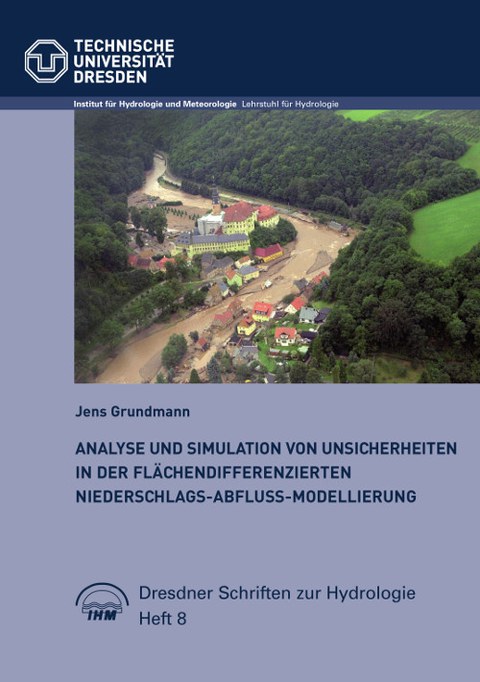Booklet 8
Analyse und Simulation von Unsicherheiten in der flächendifferenzierten Niederschlags-Abfluss-Modellierung
by Johannes Grundmann (2010)
Abstract: Modelling rainfall-runoff (R-R) processes using deterministic, spatial distributed, process-based models is affected by numerous uncertainties. One major source of these uncertainties origins from measurement errors together with the errors occurring in the process of data processing. Inadequate representation of the governing processes in the model with respect to a given application is another source of uncertainty. Considering that R-R models are commonly used in the hydrologic practise a quantification of the uncertainties is essential for a realistic interpretation of the model results. The presented new framework allows for a comprehensive, total as well as component-based estimation of the uncertainties of model results from spatial distributed, process-based R-R modelling. The capabilities of the new framework to estimate the influence of the main sources of uncertainties as well as their combination to a total uncertainty is shown and analysed at the mesoscale catchment of the Schwarze Pockau of the Ore Mountains. The approach employs the following methods to quantify the uncertainties:
- Monte Carlo simulations using spatial distributed stochastic soil parameters allow for the analysis of the impact of uncertain soil data
- Bayesian inference und Markov Chain Monte Carlo simulations, yield an estimate of the uncertainty of the conceptual model parameters governing the runoff formation and - concentration processes.
- Monte Carlo simulations using stochastically generated rainfall patterns describing the spatiotemporal variability of interpolated rainfall data.
Monte Carlo methods are also employed to combine the single sources of uncertainties to a hydrologic uncertainty and a total uncertainty. This approach accounts for the correlations between the random variables as well as an empirical description of their multidimensional dependence structure. The example application shows a dominance of the uncertainty resulting from the spatio-temporal rainfall distribution followed by the uncertainties from the soil data and the conceptual model parameters with respect to runoff. This dominance is also reflected in the total uncertainty. The uncertainties derived from the data show a heteroscedasticity which is dominated by the process. Furthermore, the degree of uncertainty seems to depend on the rainfall intensity. The analysis of the uncertainties also indicates structural deficits of the R-R model. The developed framework can principally be transferred to other catchments as well as to other R-R models.

